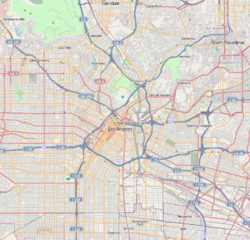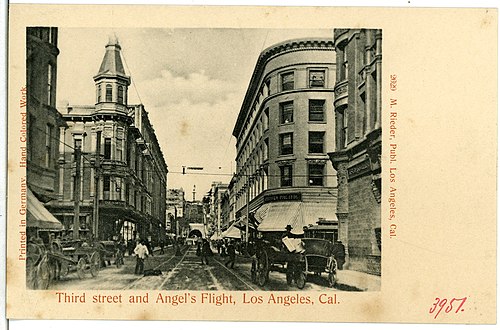Spring Street Financial District | |
 Spring Street looking north from Hotel Hayward | |
| Location | 354–704 S. Spring St., Los Angeles, California |
|---|---|
| Coordinates | 34°2′48″N118°14′59″W / 34.04667°N 118.24972°W |
| Built | 1902 |
| Architect | Morgan, Walls & Morgan; Parkinson, John |
| Architectural style | Chicago, Classical Revival, Moderne |
| NRHP reference No. | 79000489 [1] |
| Added to NRHP | August 10, 1979 |
Spring Street in Los Angeles is one of the oldest streets in the city. Along Spring Street in Downtown Los Angeles, from just north of Fourth Street to just south of Seventh Street is the NRHP-listed Spring Street Financial District, nicknamed Wall Street of the West, [2] [3] lined with Beaux Arts buildings and currently experiencing gentrification. This section forms part of the Historic Core district of Downtown, together with portions of Hill, Broadway, Main and Los Angeles streets.
Contents
- Name
- Geography
- Historic District
- History
- Buildings and sites in the district
- Image gallery
- Downtown north of the historic district
- Gallery
- West side of Spring south of Temple
- East side of Spring south of Temple
- First and Spring
- Second and Spring
- 200 block
- Third and Spring
- See also
- References
- External links





























































































